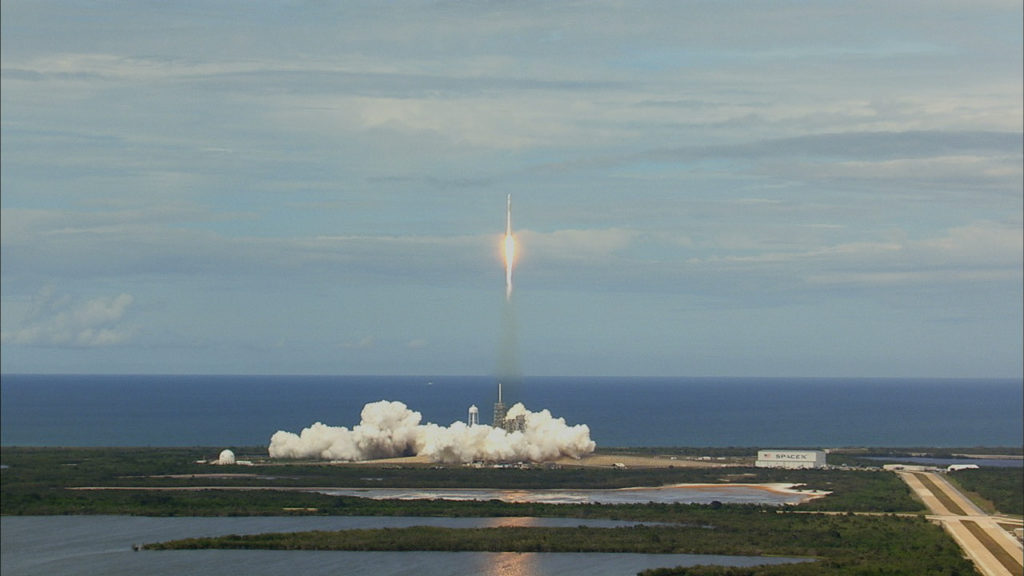 Nearly three tons of research gear, supplies and hardware are on their way to the International Space Station following the liftoff this evening of a SpaceX Falcon 9 rocket with a Dragon cargo spacecraft. The launch marked the 100th time a mission launched from Launch Complex 39A at NASA’s Kennedy Space Center in Florida. Launch occurred at 5:07 p.m. to cap a smooth countdown.
Nearly three tons of research gear, supplies and hardware are on their way to the International Space Station following the liftoff this evening of a SpaceX Falcon 9 rocket with a Dragon cargo spacecraft. The launch marked the 100th time a mission launched from Launch Complex 39A at NASA’s Kennedy Space Center in Florida. Launch occurred at 5:07 p.m. to cap a smooth countdown.
Now in orbit with its twin solar arrays open to generate power for the spacecraft systems, the Dragon is on course to rendezvous with the space station Monday, June 5. Astronaut Jack Fischer, working inside the station, will grapple the spacecraft with the station’s 57-foot-long robotic arm before ground controllers move the Dragon to a port on the station so the crew can unpack it.
Dragon will remain connected to the station until early July so astronauts can unpack the spacecraft and fill it with spent materials such as concluded experiments and hardware no longer needed in orbit.
Numerous experiments are packed inside the pressurized area of the Dragon, including experiments that will enhance study of the heart in microgravity, study microbials aboard the space station and enhance research on plants to be grown in orbit.
Along with the cargo inside the Dragon, three research elements also are packed inside the trunk that will be mounted on the outside of the station.
NICER, an instrument dedicated to studying the physics of neutron stars, will use the vantage point of the space station to gain unprecedented insight into the fast-spinning objects. The payload includes a technology demonstrator called SEXTANT to help researchers develop a pulsar-based space navigation system that could do for space navigation what GPS systems have done for Earth.
A technology demonstrator called ROSA also will be connected to the station’s exterior during the CRS-11 mission. Short for Roll Out Solar Array, the ROSA demonstrator will test a lightweight mechanism to deploy solar panels in space. The device may be used on future spacecraft to generate electricity. It cannot be fully tested on Earth because of the presence of gravity.
The MUSES platform will be moved from the Dragon to a position on the station where it can point instruments toward the Earth for a variety of observational missions ranging from agriculture and food security to oil and gas exploration.
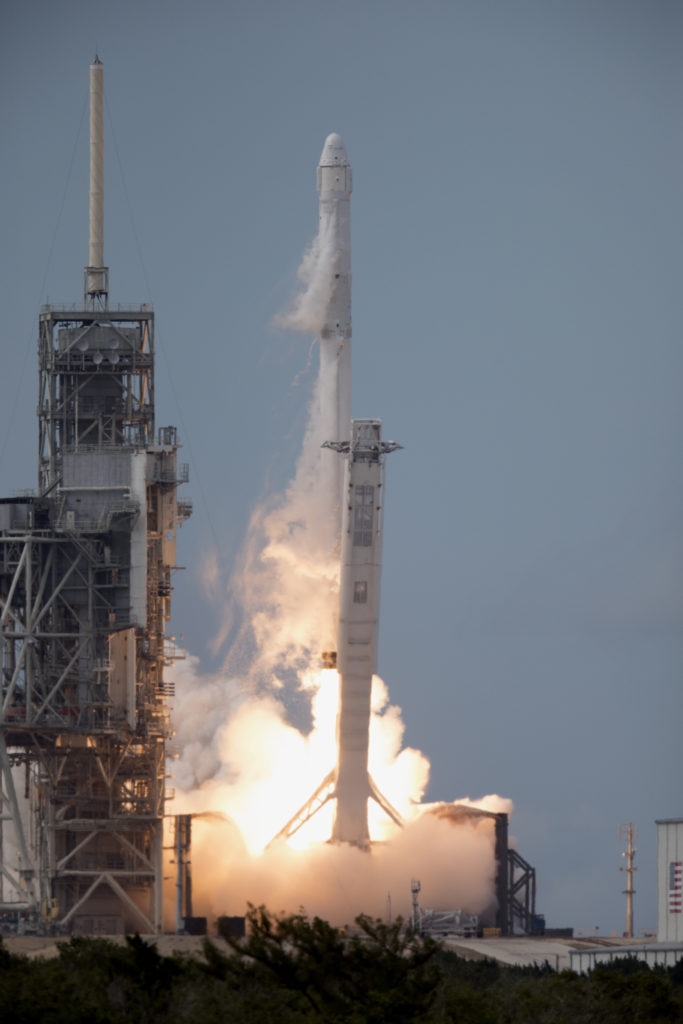

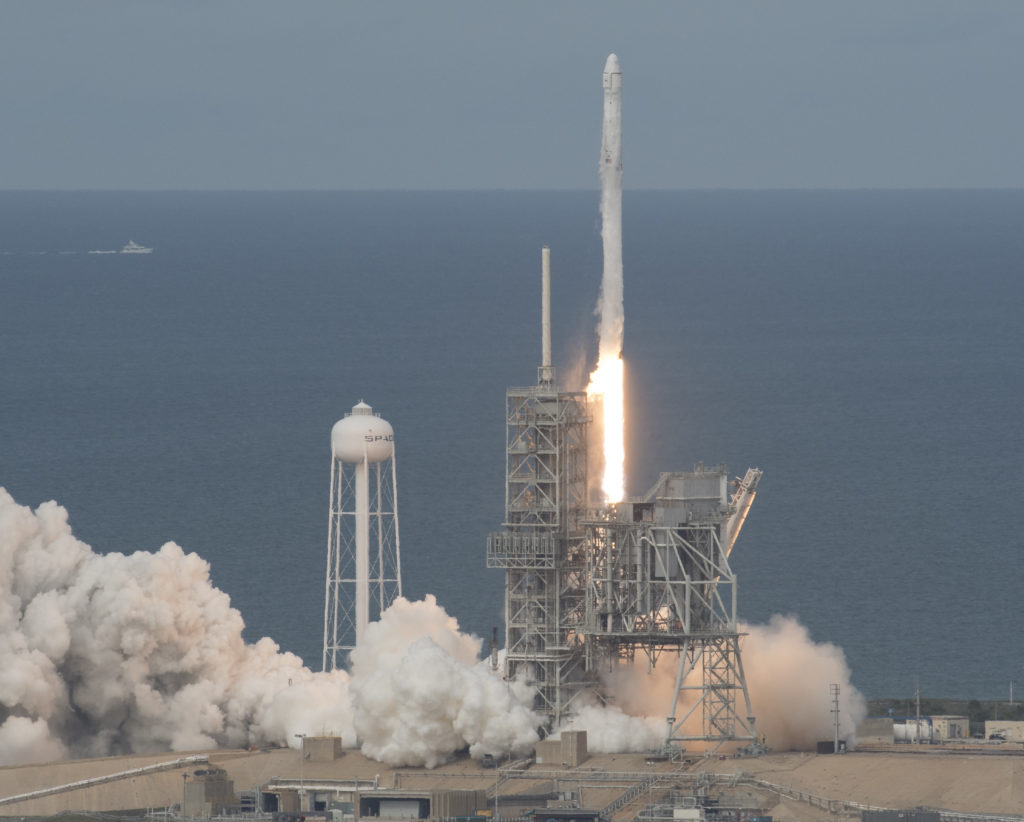
 Nearly three tons of research gear, supplies and hardware are on their way to the International Space Station following the liftoff this evening of a SpaceX Falcon 9 rocket with a Dragon cargo spacecraft. The launch marked the 100th time a mission launched from Launch Complex 39A at NASA’s Kennedy Space Center in Florida. Launch occurred at 5:07 p.m. to cap a smooth countdown.
Nearly three tons of research gear, supplies and hardware are on their way to the International Space Station following the liftoff this evening of a SpaceX Falcon 9 rocket with a Dragon cargo spacecraft. The launch marked the 100th time a mission launched from Launch Complex 39A at NASA’s Kennedy Space Center in Florida. Launch occurred at 5:07 p.m. to cap a smooth countdown.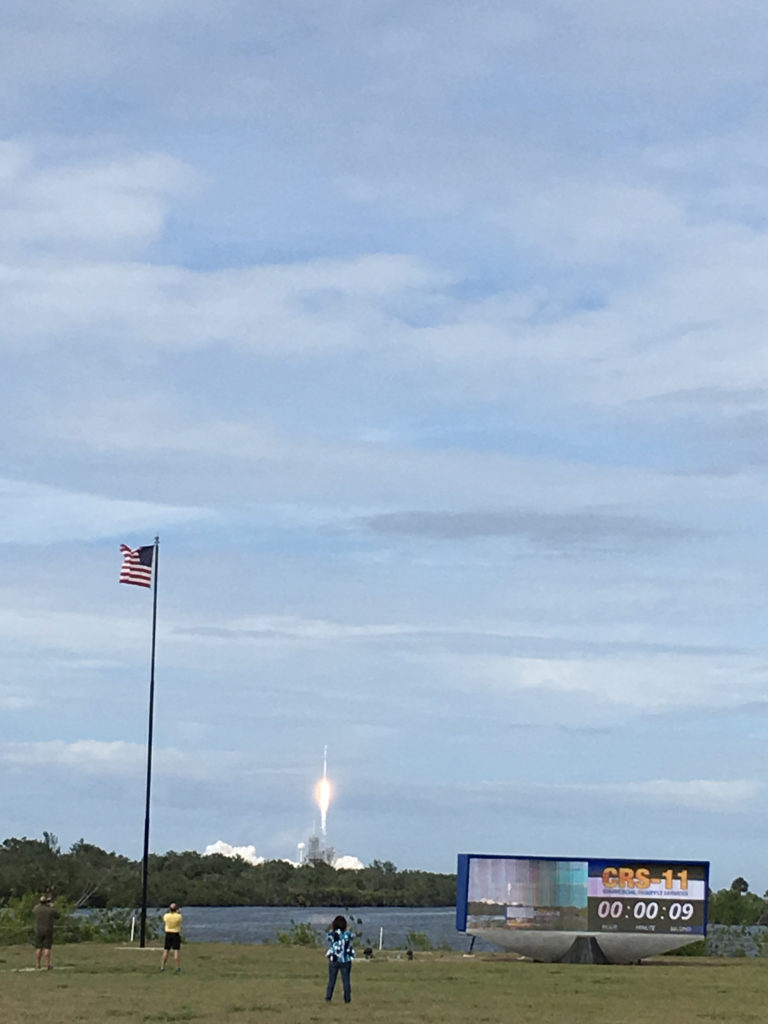 As the second stage continues to burn as planned, the first stage is returning to launch area. Here’s a photo of the launch minutes ago as the CRS-11 mission lifted off from LC-39A. Photo credit: NASA
As the second stage continues to burn as planned, the first stage is returning to launch area. Here’s a photo of the launch minutes ago as the CRS-11 mission lifted off from LC-39A. Photo credit: NASA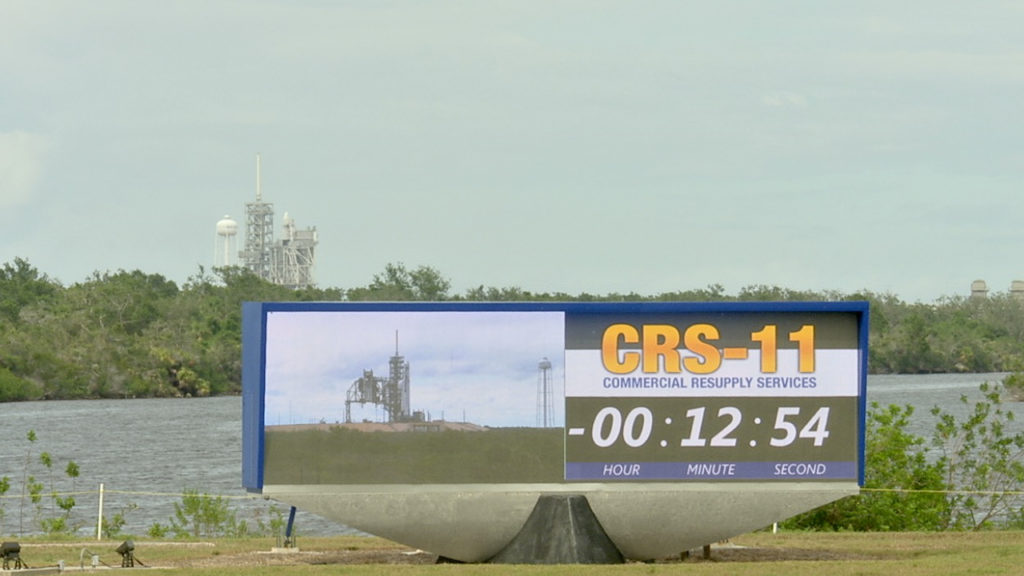
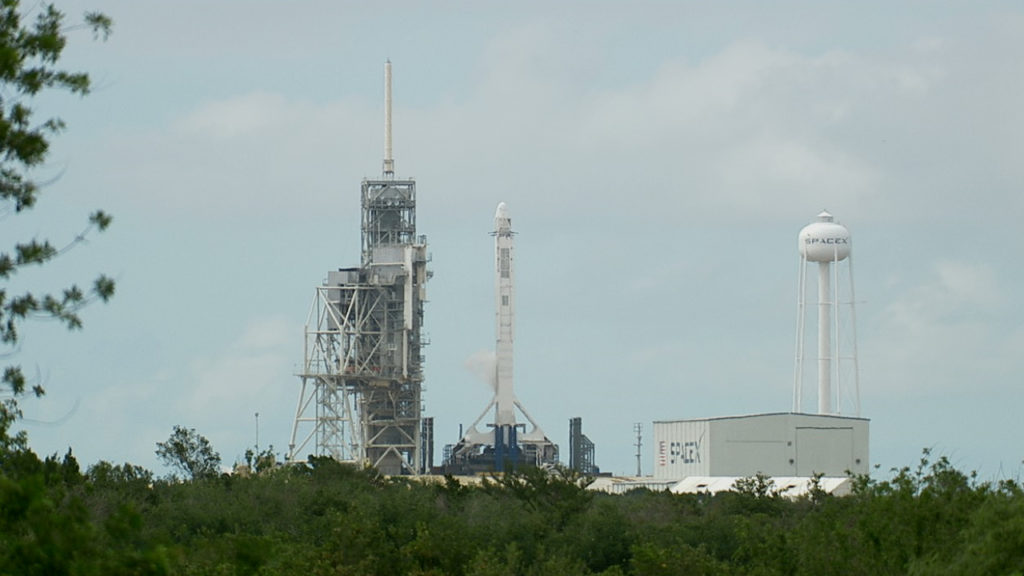
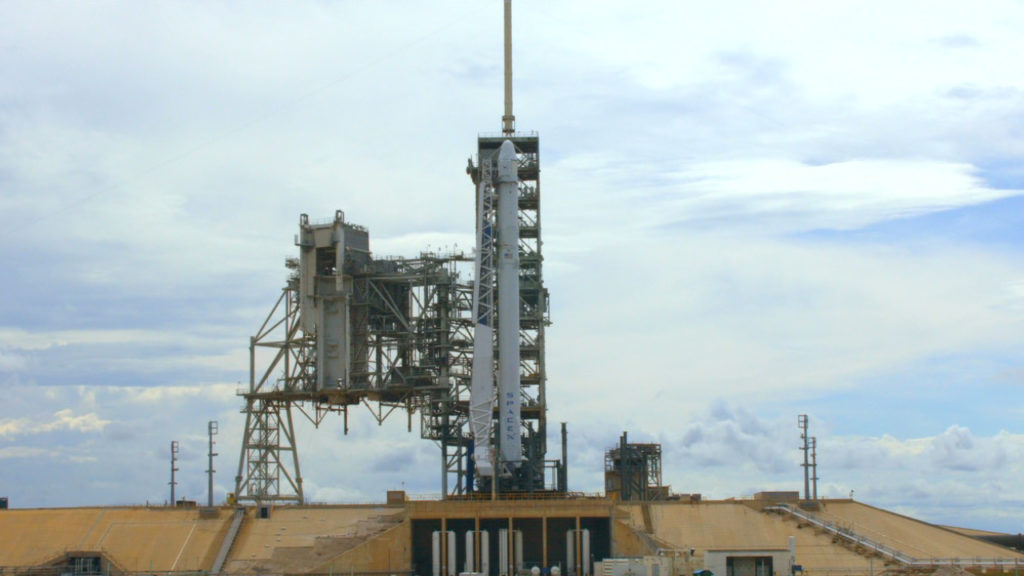 Numerous experiments are packed inside the pressurized area of the Dragon, including experiments that will enhance study of the heart in microgravity, study microbials aboard the space station and enhance research on plants to be grown in orbit. For a closer look at the payloads aboard the CRS-11 Dragon, go to
Numerous experiments are packed inside the pressurized area of the Dragon, including experiments that will enhance study of the heart in microgravity, study microbials aboard the space station and enhance research on plants to be grown in orbit. For a closer look at the payloads aboard the CRS-11 Dragon, go to